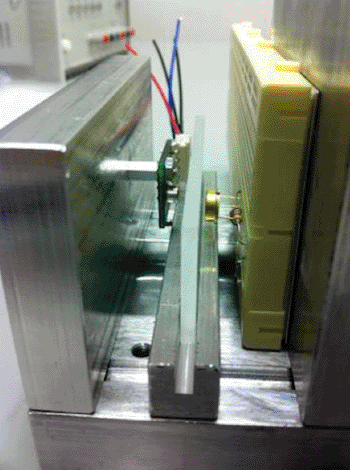New Breathalyzer Monitors Blood Glucose in Diabetics
By LabMedica International staff writers
Posted on 26 Nov 2013
A novel noninvasive breathalyzer device has been created that can monitor blood glucose levels in diabetics by detecting acetone levels. Posted on 26 Nov 2013
Current technology to measure blood glucose includes the use of a portable testing meter that can measure sugar levels in the body from a small drop of blood, but it is invasive, can often cause discomfort for the patient, and can lead to low compliance with poor health consequences.

Image: A new breathalyzer device is able to detect acetone in the breath, revealing blood glucose levels (Photo courtesy of Western New England University).
Scientists at the Western New England University (Springfield, MA, USA) produced a hand-held breathalyzer that uses nanometer-thick films that are made up of two polymers. These polymers are able to react with acetone. Acetone is one of the ketones, which are acids that remain in the body when the body burns its own fat. Ketones build up when there is not enough insulin to help fuel the body's cells, meaning they are more common in people with diabetes.
In the breathalyzer device, the acetone adheres to the polymers and alters the physical chemistry of the film. The film then discloses the amount of acetone detected, which in turn reveals glucose levels in the blood. At present, the breathalyzer is similar in size to a book; however, an engineer at Western New England University is helping to make the device similar in size to breathalyzers that are used to detect blood alcohol content levels.
Ronny Priefer, PhD, the designer of the device said, “Breathalyzers are a growing field of study because of their potential to have a significant positive impact on patients' quality of life and compliance with diabetes monitoring. What makes our technology different is that it only accounts for acetone and doesn't react with other components in the breath.”
Prof. Preifer added that common shortfalls with other breathalyzer technologies have included inconsistent results due to natural humidity in the breath, high temperature requirements, and lack of differentiation. The study was presented at the American Association of Pharmaceutical Scientists (AAPS) Annual Meeting and Exposition held November 10-14, 2013, in San Antonio (TX, USA).
Related Links:
Western New England University




 assay.jpg)








